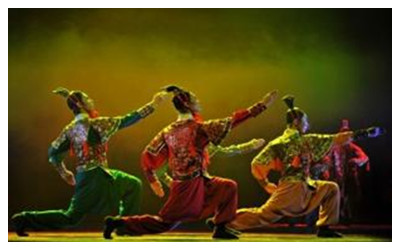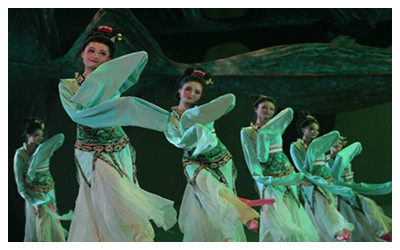Skype: neodalle-travel
Tel: +86 135 7447 2266
E-mail: sales@visitaroundchina.com

 Chinese classical dance, originating in ancient China, has a long history with profound influence. Combining with a wealth of movements and modeling extracted from martial arts and drama, it particularly emphasizes on the role of eyes,breathing, rhythm and sense of style during the show. The intoxicating beauty of Chinese classical dance derives from the unique blend of Eastern delicacy and force.
Chinese classical dance, originating in ancient China, has a long history with profound influence. Combining with a wealth of movements and modeling extracted from martial arts and drama, it particularly emphasizes on the role of eyes,breathing, rhythm and sense of style during the show. The intoxicating beauty of Chinese classical dance derives from the unique blend of Eastern delicacy and force.
Han Tang dance, also Chinese Classical Dance, is an incredibly refined and expressive dance form originated from the Chinese court dance tracing back to the Han and Tang Dynasties. Created 1500 years ago, Han Tang dance depicts the story of battle, victory, love & celebration.
In 1979, Sun Ying (孙颖, 1929—2009), Chinese classical dance professor at the Beijing Dance Academy, instigated reform in the field of Chinese Classical Dance, the official national dance form of the People's Republic of China. In creating the Han-Tang style of Chinese classical dance , Mr Sun challenged accepted notions of Chinese ness within the field, especially the idea that Chinese indigenous theater, or xiqu, should serve as the primary foundation for a distinctively Chinese national body aesthetic. While his alternative vision of Chineseness produced extensive controversy, this controversy is not antithetical to the historical aims and assumptions of Chinese classical dance. Since the founding of the field in the early 1950s, practitioners of Chinese classical dance have treated Chineseness as a subject for creative invention, interpretation, and debate.
 Ask Questions ?
Ask Questions ?